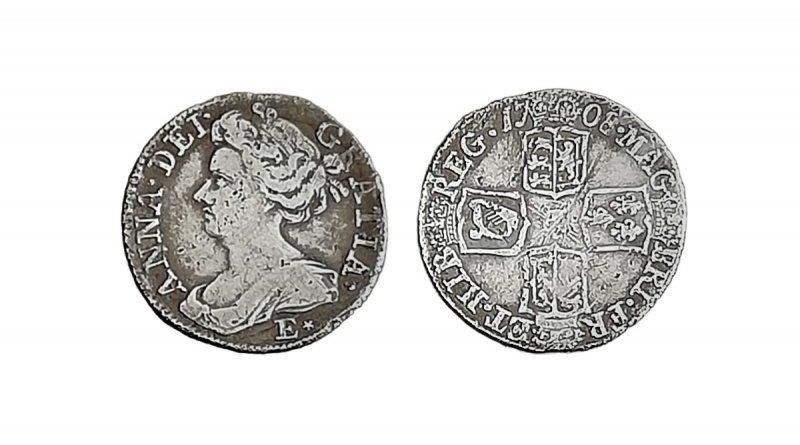Anne, sixpence
The early milled coins most frequently unearthed by detectorists are sixpences of William III. This is to be expected, for they were struck in huge numbers during 1696 and 1697. Experienced detectorists also know that most of those in very worn condition were bent into the shape of a letter S and used as love tokens.
When William III died the next monarch was Queen Anne. I would guess that no less than 50 William III sixpences are found for each one of Anne. This estimate is based upon close to 25 years of detecting and my experience in the viewing of tens of thousands of finds. Anne sixpences aren’t particularly scarce in themselves but they are certainly rare as detecting finds.
Pictured here is a sixpence of Anne, which was unearthed very recently by Anthony Hopkinson. On the obverse it has E* below the ‘Edinburgh’ bust of Anne and on the reverse the date, 1708, is split in two by the crown above the English shield. In Coins of Scotland, Ireland and the Islands sixpences of this type are listed as number 5724.
When in 1603 James VI of Scotland became James I of England this united the crowns but not the countries. It was not until 1707, through the Act of Union, that the two countries were united. There is much talk today of breaking them apart again!
The mint in Scotland continued to produce coins up to 1709 and was then closed down. Thereafter coins struck in England were used throughout Scotland.
Strictly speaking, Anthony’s find would grade only slightly better than Fine. However, it has eye appeal and is quite rare. It’s the first specimen of its type I have seen as a detecting find and I don’t expect to see another during my lifetime.
Valuation
Coin Valuation Service
Have your coin or artefact valued using my free online coin valuation service

